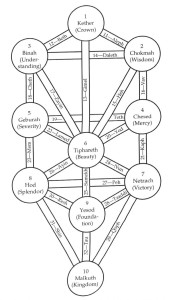If an innovative interpretation of scripture becomes a revelation to a community, it may then become a scripture in turn. New religious movements can arise from radically new readings of established scripture.
Dogen, for instance, reinterpreted some key passages in Buddhist sutras in various parts of his Shobogenzo, such as ‘Bussho’ (Waddell and Abe 2002, 59). Likewise the Gnostic writers had a strong tendency to ‘subject texts of the Hebrew Bible to critical scrutiny and offer interpretations that run counter to the traditional ones’ (Pearson 2007, 101). Unconventional interpretations of the Qur’an by the Bab (Sayyid Ali Muhammad Shirazi) led directly to the development of the Babi religion and later the Baha’i faith (Lawson 2012). Blake’s recognition of the ‘Divine Humanity’ was partially anticipated by the Gnostic idea ‘that God can be referred to as Man, a notion that can be read out of such key passages in the Bible as Genesis 1:26-27 and Ezekiel 1: 26-28’ (Pearson 2007, 105). Radical (‘hyperliteral’) readings of the Torah constitute much of the Zohar, the central text of Kabbalah.
The mystic who studies Torah is meditating on the Name of God. He sees through the text into the texture of divine life.
… The Zohar may abandon the literal sense of a verse or, conversely, employ the technique of mystical literalness, reading hyperliterally.— Daniel Matt (1983, 31)
A ‘hyperliteral’ reading treats the letters of the alphabet as meaningful in themselves, actually as the fundamental units of significance. A focus on syntax can also furnish unconventional readings of scripture. The very beginning of the Torah, Genesis 1:1, receives such a reading in Zohar 1:15a:
With this beginning, the unknown concealed one created the palace. This palace is called Elohim, God. The secret is: Bereshit bara Elohim, With beginning, _____ created God.
— ZP I.110)

The Zohar‘s Aramaic rendering takes the word order in the Hebrew as signifying that Elohim (representing the third sefirah, Binah) is created by means of (‘with’) ‘the point of Hokhmah’ (the second sefirah), but the ultimate/intimate source of creation is ineffable (yet can be called Keter (‘Crown’) or Ayin (‘Nothingness’)). The creative process here is one of emanation, not the act of an agency separate from what is created, as in the more conventional reading (which is often loosely called “literal”).